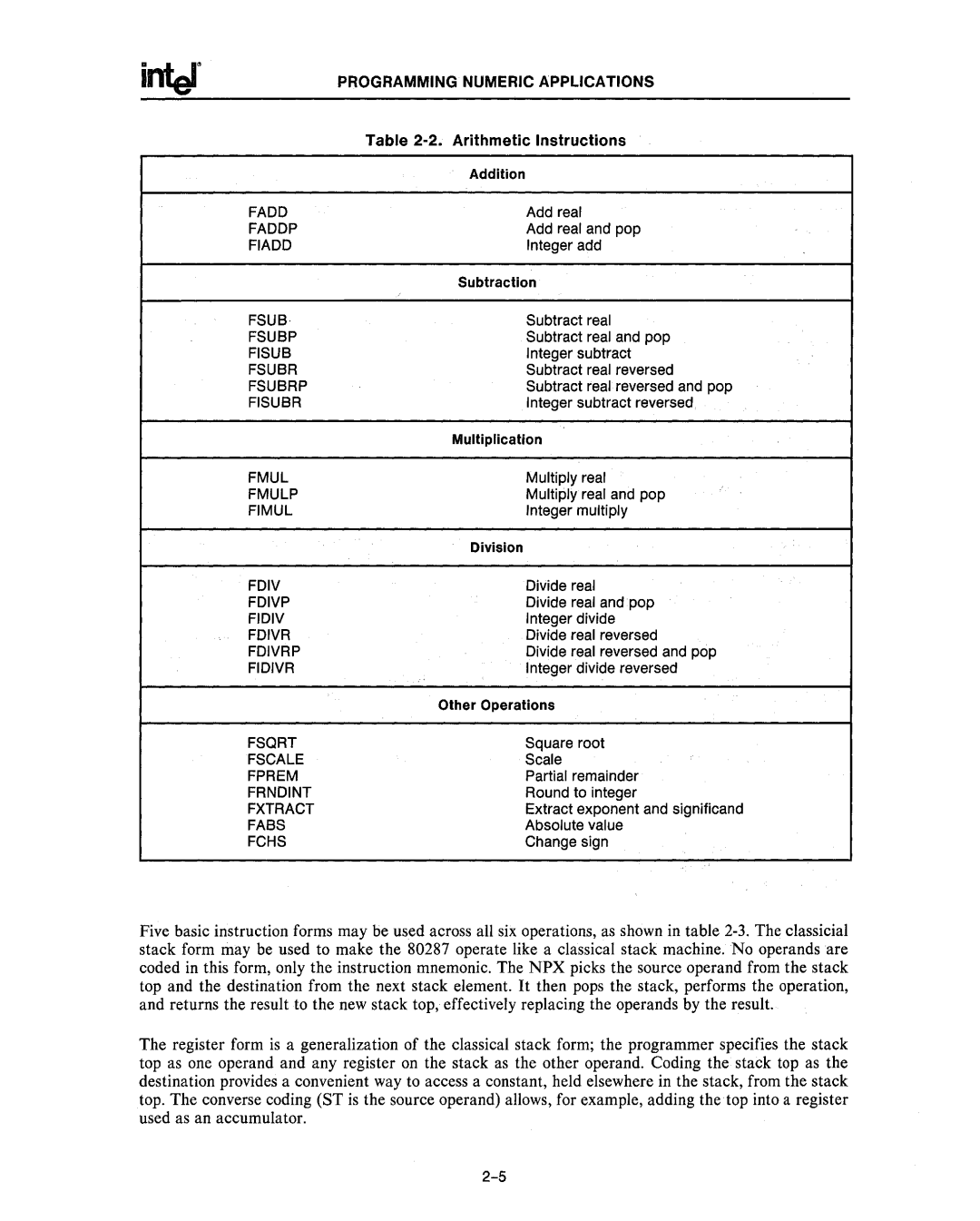
| PROGRAMMING NUMERIC APPLICATIONS |
| Table |
| Addition |
FADD | Add real |
FADDP | Add real and pop |
FIADD | Integer add |
| Subtraction |
FSUB | Subtract real |
FSUBP | Subtract real and pop |
FISUB | Integer subtract |
FSUBR | Subtract real reversed |
FSUBRP | Subtract real reversed and pop |
FISUBR | Integer subtract reversed |
| Multiplication |
FMUL | Multiply real |
FMULP | Multiply real and pop |
FIMUL | Integer multiply |
| Division |
FDIV | Divide real |
FDIVP | Divide real and pop |
FIDIV | Integer divide |
FDIVR | Divide real reversed |
FDIVRP | Divide real reversed and pop |
FIDIVR | Integer divide reversed |
| Other Operations |
FSQRT | Square root |
FSCALE | Scale |
FPREM | Partial remainder |
FRNDINT | Round to integer |
FXTRACT | Extract exponent and significand |
FABS | Absolute value |
FCHS | Change sign |
Five basic instruction forms may be used across all six operations, as shown in table
The register form is a generalization of the classical stack form; the programmer specifies the stack top as one operand and any register on the stack as the other operand. Coding the stack top as the destination provides a convenient way to access a constant, held elsewhere in the stack, from the stack top. The converse coding (ST is the source operand) allows, for example, adding the top into a register used as an accumulator.
